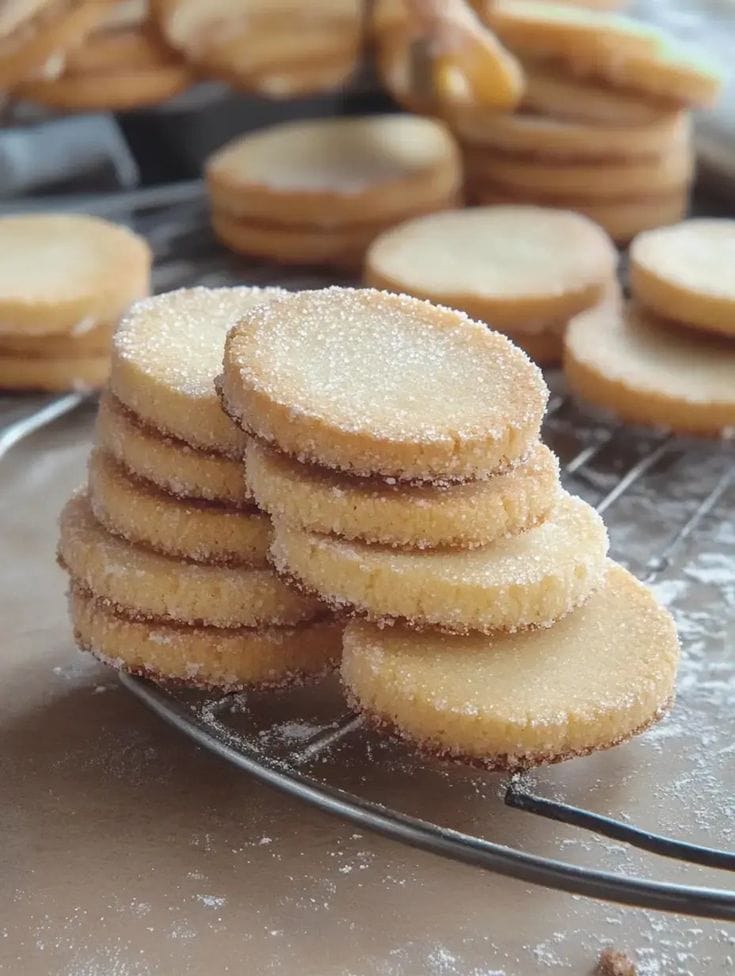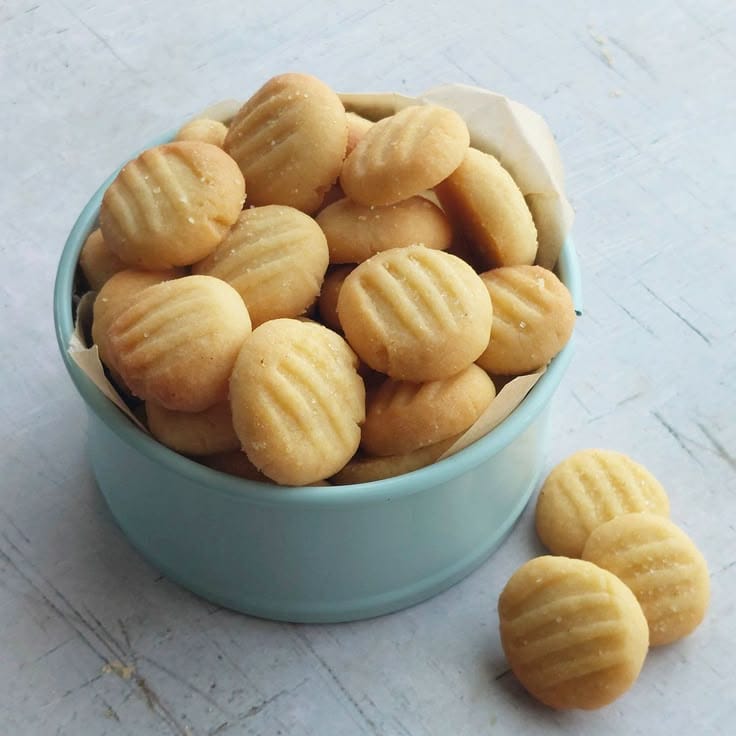Discover the ultimate secret to making the crispiest cookies you’ve ever tasted. Get pro baking tips, expert-approved ingredients, and the perfect recipe for crunchy cookie perfection!
Cookies are a universal favorite—whether soft and chewy or thin and crunchy. But if you’re a fan of crisp, golden-brown cookies that snap with every bite, you’ve likely asked yourself this age-old question: What’s the secret to the crispiest cookies you’ll ever make?
In this comprehensive guide, we’ll break down everything you need to know about making crispy cookies, from ingredients to baking temperature and even storage hacks. Whether you’re baking for family, a cookie exchange, or just to satisfy your own cravings, these tips will transform your cookie game forever.
Why Do Some Cookies Turn Out Soft While Others Are Crispy?
Before we dive into the secrets of making the crispiest cookies, it’s essential to understand what causes the texture variation in cookies.
The texture of a cookie depends on a few key factors:
- The ratio of fat to flour
- The type of sugar used
- Baking time and temperature
- Moisture content in the dough
Understanding how each ingredient behaves in the oven is the first step toward mastering the art of the perfect crispy cookie.
The Secret Ingredient: Butter Over Shortening
If you want cookies with a perfectly crispy edge, real butter is your best friend. Butter has a lower melting point than shortening, which causes the dough to spread more in the oven. This leads to thinner, crisper cookies.
Pro tip: Use unsalted butter for better control over the overall saltiness, and make sure it’s room temperature before you begin mixing your dough.
Sugar Matters: Use White Over Brown
When it comes to sugar, white sugar is the key to crispiness, while brown sugar makes cookies soft and chewy because it retains more moisture due to its molasses content.
If you’re aiming for ultimate crunch, consider using 100% granulated sugar in your recipe. It promotes more caramelization and results in that golden, crispy finish.
Flour Type and Ratios
Using all-purpose flour provides the right structure for cookies, but the quantity matters. Less flour means thinner, crispier cookies. Too much flour, and your cookies will be puffy and cake-like.
You can even experiment by replacing a tablespoon or two of flour with cornstarch or rice flour, which can make your cookies even more tender and crisp.
The Baking Soda vs. Baking Powder Debate
For crispy cookies, stick with baking soda. It causes the cookies to spread more than baking powder does, resulting in thinner cookies that bake quickly and become crunchy.
The Importance of Oven Temperature
High heat is crucial if you’re after crispy cookie edges and a crunchy center. Bake your cookies at 375°F (190°C) rather than 350°F to promote caramelization and even browning.
Avoid underbaking. The longer the cookies are in the oven (without burning, of course), the crispier they’ll be. If you’re making small, thin cookies, they should only need 8–10 minutes.
Chill Your Dough (or Don’t?)
Here’s where things get interesting. Most cookie recipes recommend chilling the dough to prevent spreading. But if you want crispy, thin cookies, consider not chilling the dough. This encourages the cookies to spread quickly and bake evenly, producing that coveted snap.
Roll Them Thin
The thickness of your cookie dough before baking has a direct impact on texture. Roll the dough into 1-inch balls or flatten slightly with your hand for a thinner cookie that will crisp up better.
You can also roll out the dough and cut it with cookie cutters for even crispier results.
The Role of Add-Ins: Choose Wisely
Nuts, seeds, and even toffee bits can add to the crunch factor. But beware—add-ins like dried fruits or chocolate chips that retain moisture may reduce crispiness.
If you love chocolate, opt for mini chocolate chips or chop them finely to avoid adding too much moisture to your dough.
Cool Completely Before Storing
Once out of the oven, don’t touch the cookies until they’ve cooled completely. Cooling allows them to crisp up fully. Transfer cookies to a wire rack for proper airflow and avoid stacking them until they are totally cool.
Storage Tips: Keep the Crunch
Nothing is more frustrating than baking perfect crispy cookies only to find them soft and stale the next day. Here’s how to store them right:
- Use an airtight container lined with a paper towel.
- Add a piece of white bread inside the container—it will absorb excess moisture.
- Store cookies at room temperature, not in the fridge.
Avoid storing crispy cookies with soft cookies; the moisture will migrate and ruin the texture.
Recipe: Ultimate Crispy Butter Cookies
Here’s a foolproof recipe for the crispiest cookies you’ll ever make.
Ingredients:
- 1 cup (226g) unsalted butter, softened
- 1 cup (200g) granulated sugar
- 1 large egg
- 1 tsp vanilla extract
- 2 cups (240g) all-purpose flour
- 1/2 tsp baking soda
- 1/2 tsp salt

Instructions:
- Preheat oven to 375°F (190°C). Line baking sheets with parchment paper.
- In a large bowl, cream the butter and sugar until light and fluffy (about 2-3 minutes).
- Beat in the egg and vanilla extract until fully combined.
- In a separate bowl, whisk together the flour, baking soda, and salt.
- Slowly add the dry ingredients to the wet mixture. Mix until just combined.
- Roll dough into small balls (about 1 inch) and place 2 inches apart on the baking sheet.
- Flatten slightly with your hand or the back of a spoon.
- Bake for 8–10 minutes, or until the edges are golden brown.
- Cool on the baking sheet for 5 minutes, then transfer to a wire rack to cool completely.
Troubleshooting Common Mistakes
If your cookies aren’t turning out as crispy as you’d like, here are a few tips:
- Too thick? Flatten the dough more before baking.
- Too soft? Increase baking time by 1-2 minutes.
- Not spreading enough? Reduce the flour slightly or skip chilling the dough.
- Too chewy? Replace brown sugar with white sugar completely.

Bonus: Gluten-Free and Vegan Crispy Cookie Options
Going gluten-free or vegan doesn’t mean you have to give up crispy cookies! Here’s how to adapt:
- Gluten-Free: Use a gluten-free 1-to-1 baking flour with a tablespoon of rice flour for added crisp.
- Vegan: Replace butter with vegan margarine or coconut oil, and the egg with a flaxseed egg (1 tbsp flaxseed + 3 tbsp water). Use plant-based sugar substitutes that still allow caramelization.

Final Thoughts: Crispy Cookie Mastery Is Within Reach
The secret to the crispiest cookies you’ll ever make isn’t just one thing—it’s a combination of ingredients, techniques, and timing. With the right fat, sugar, and baking method, you can achieve bakery-quality cookies at home every time.
Whether you’re baking classic butter cookies, crunchy chocolate chip, or thin oatmeal crisps, these tips will ensure your cookies snap, crackle, and crunch with each bite.
